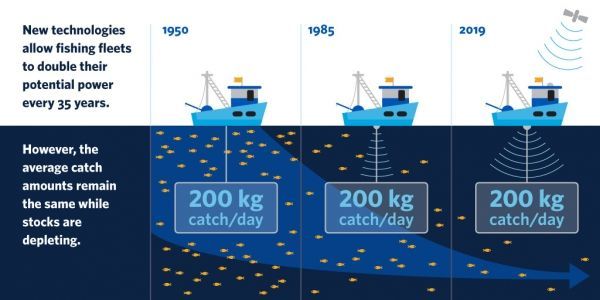Technological advances are allowing commercial fishing fleets to double their fishing power every 35 years and put even more pressure on dwindling fish stocks, new research has found.
Researchers from the Sea Around Us initiative at the University of British Columbia analyzed more than 50 studies related to the increase in vessels’ catching power and found that the introduction of mechanisms such as GPS, fishfinders, echo-sounders or acoustic cameras, has led to an average two per cent yearly increase in boats’ capacity to capture fish.
“This means that if a fleet has 10 boats today, one generation later, the same 10 boats have the fishing power of 20 vessels. The next generation, they have the power of 40 boats, and so on,” said Deng Palomares, the Sea Around Us project manager and lead author of the study, which was published today in Ecology and Society.
An increase in fishing power is known as ‘technological creep’ and it’s usually ignored by fisheries managers who are in charge of regulating how many days and hours and technique each vessel under their oversight is supposed to fish in a given period.
Read more at University of British Columbia
Image: Researchers from the Sea Around Us initiative at the University of British Columbia analyzed more than 50 studies related to the increase in vessels’ catching power. CREDIT: Sea Around Us


